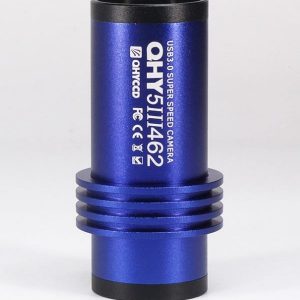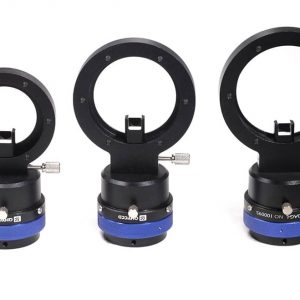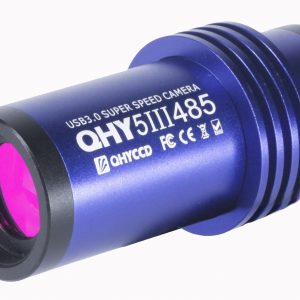| Model | QHY5III200M |
| CMOS Sensor | SC2210 |
| Pixel Size | 4um*4um |
| Effective Pixel Area | 1920*1080 |
| Effective Pixels | 2 Mega Pixel |
| Fullwell | 8000e |
| Readout Noise | 0.75e – 3e |
| AD Sample Depth | 12bit (output as 16bit and 8bit) |
| Built-in Image Buffer | 512MB DDR3 Memory |
| ROI Frame Rate | Full Resolution 96.5FPS @8BIT 60FPS @16BIT
960Lines 187FPS @8BIT 116FPS @16BIT 480Lines 209FPS @8BIT 130FPS @16BIT |
| Exposure Time Range | 15us-900sec |
| Shutter Type | Electric Rolling Shutter |
| Computer Interface | USB3.2 Gen1 Type-C |
| Guide Port | st4 |
| Telescope Interface | 1.25-inch, compatible with CS-port and C-port lenses by replacing the front-end connector
(An IR AR glass and an IR850nm filter are included in the standard version.) |
| Back Focal Length | 17 mm(with adapter); 8±0.5 mm (without adapter) |
| Weight | 90g |
Curves



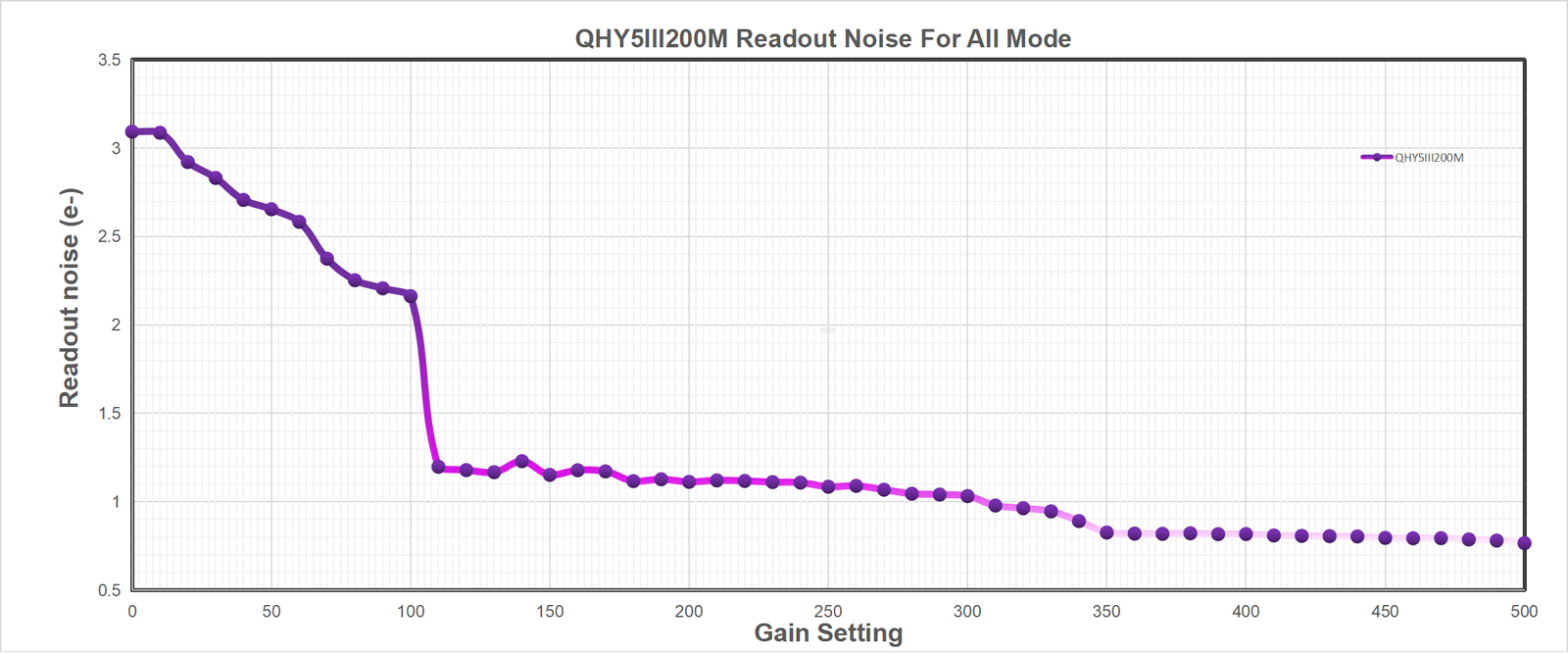
Mechanical Dimensions
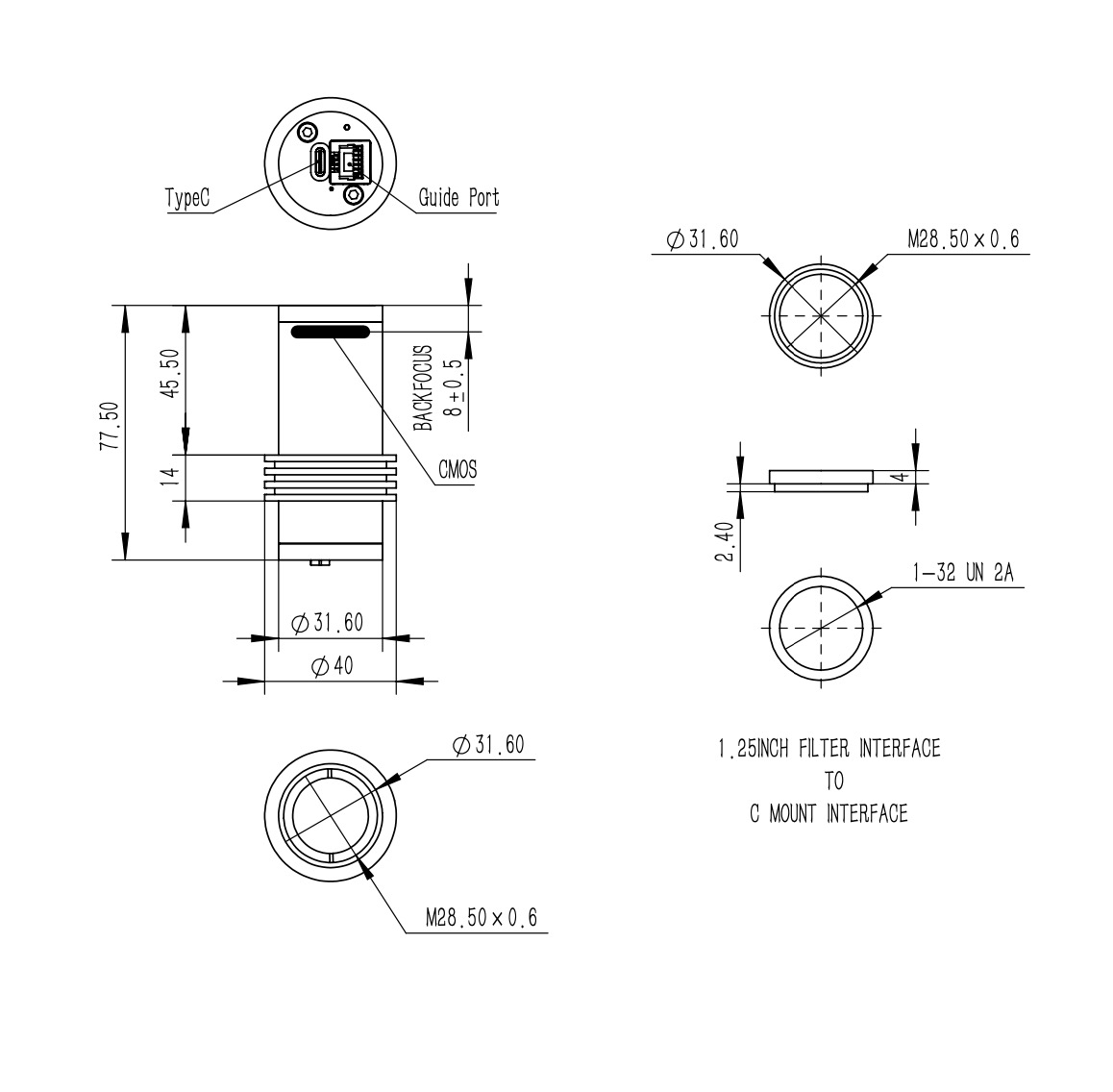
Documentation:

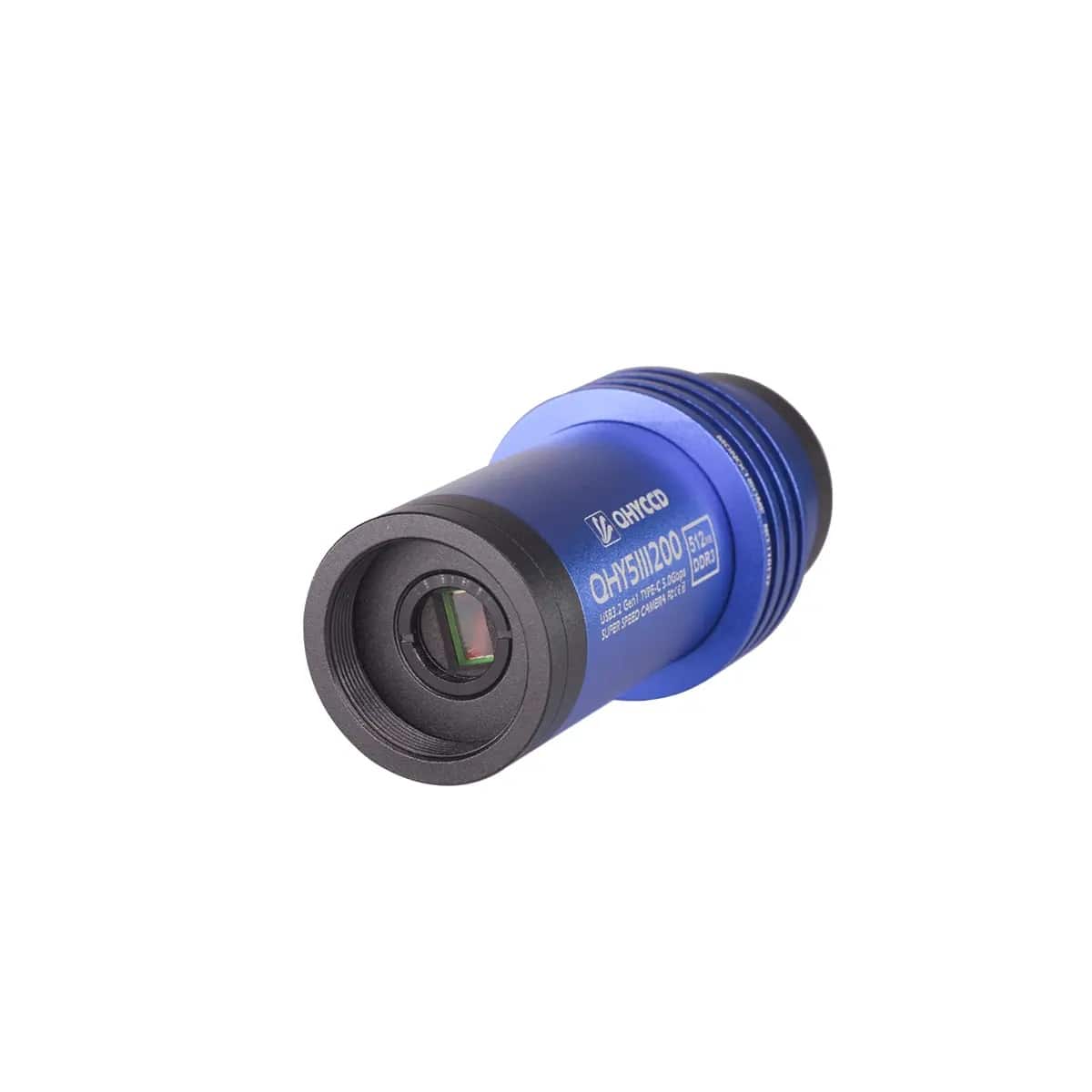

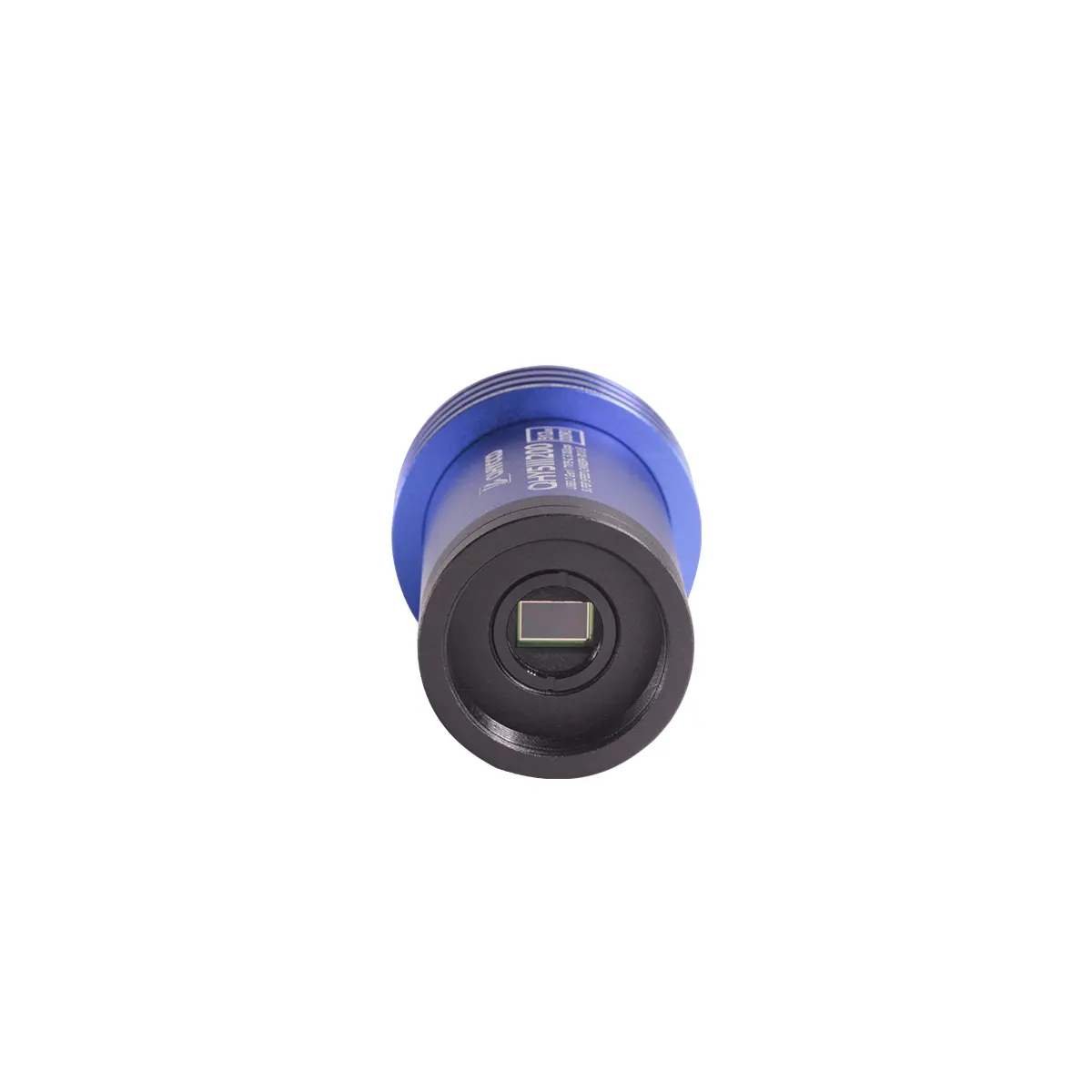
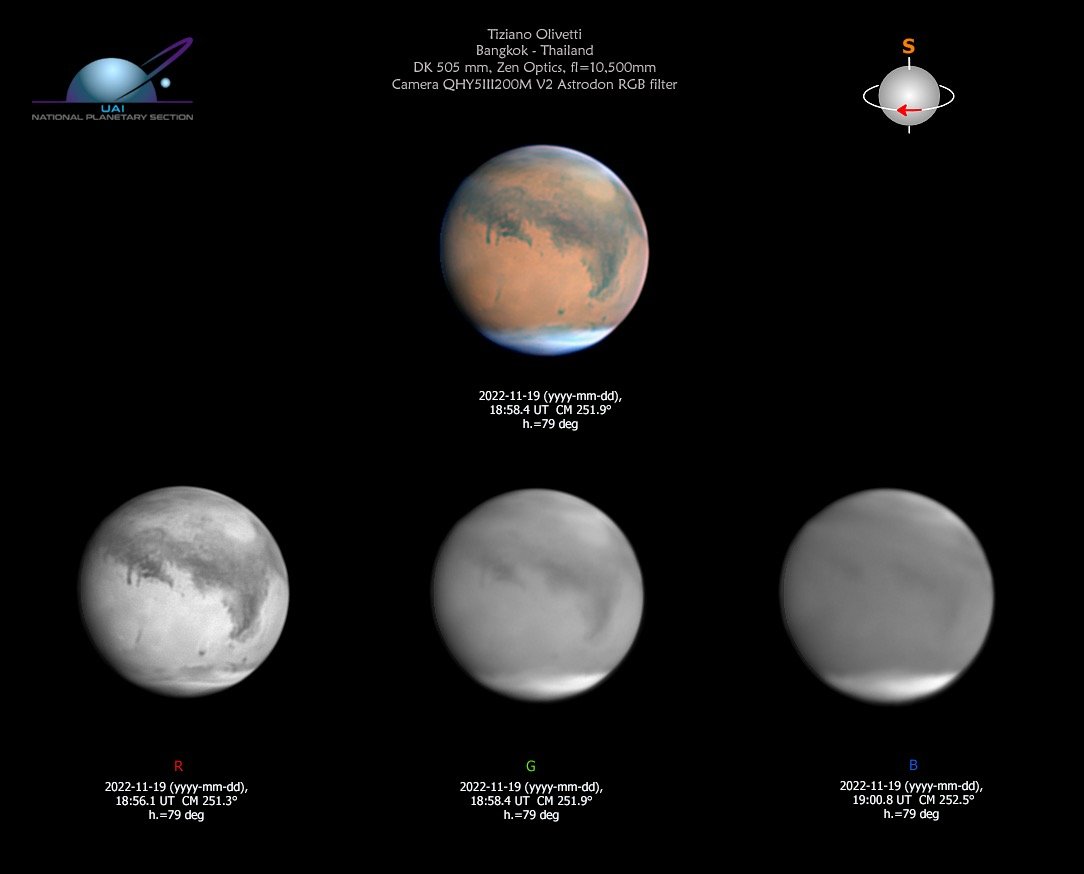
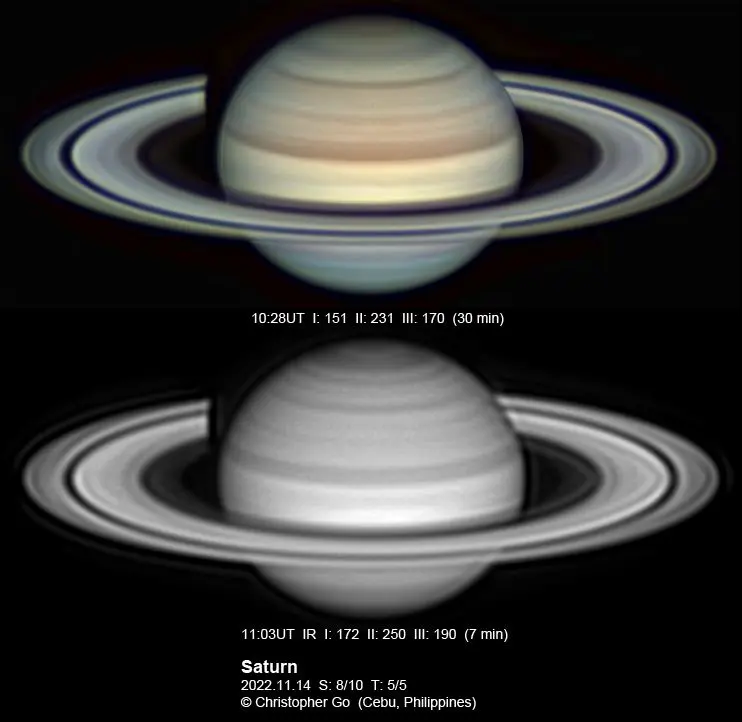
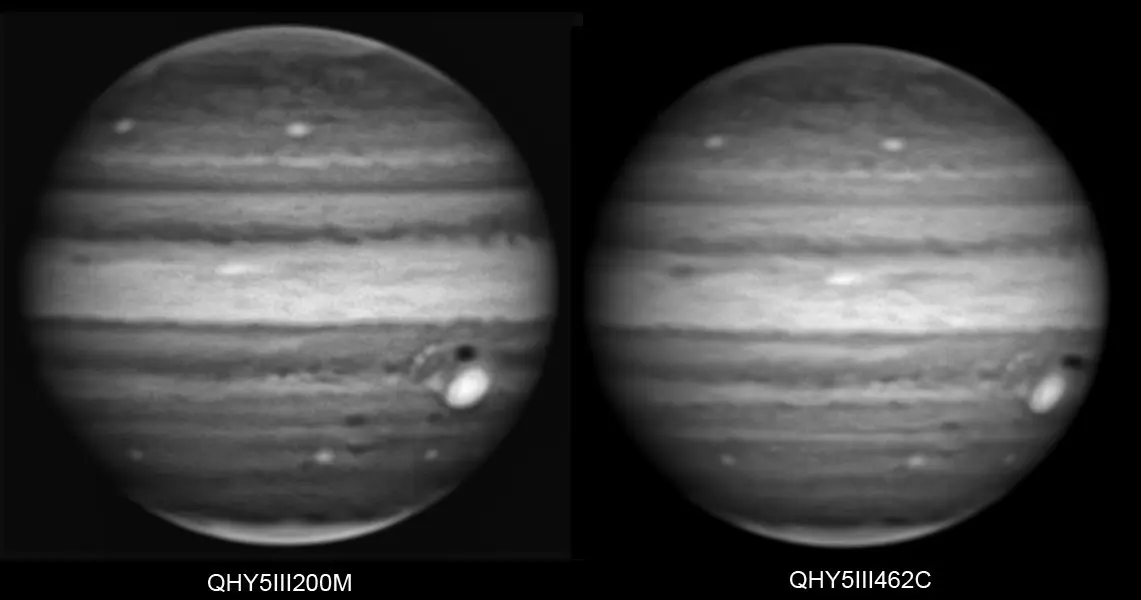


 The QHY5III (Ver. 2) series planetary and guiding cameras are all equipped with a 512 MB DDR3 image buffer which can effectively reduce the pressure on computer transmission. A great help for planetary photography, which often requires writing a large amount of data in a short period of time. Some deep-sky astrophotography cameras on the market today only have 256 MB, for example.
The QHY5III (Ver. 2) series planetary and guiding cameras are all equipped with a 512 MB DDR3 image buffer which can effectively reduce the pressure on computer transmission. A great help for planetary photography, which often requires writing a large amount of data in a short period of time. Some deep-sky astrophotography cameras on the market today only have 256 MB, for example.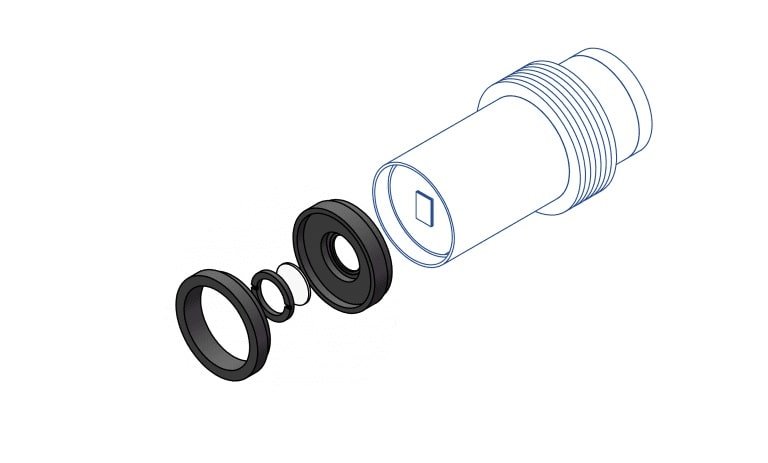 In comparison, the 512 MB DDR3 memory of the new 5III (Ver. 2) series cameras represents a significant upgrade.
In comparison, the 512 MB DDR3 memory of the new 5III (Ver. 2) series cameras represents a significant upgrade.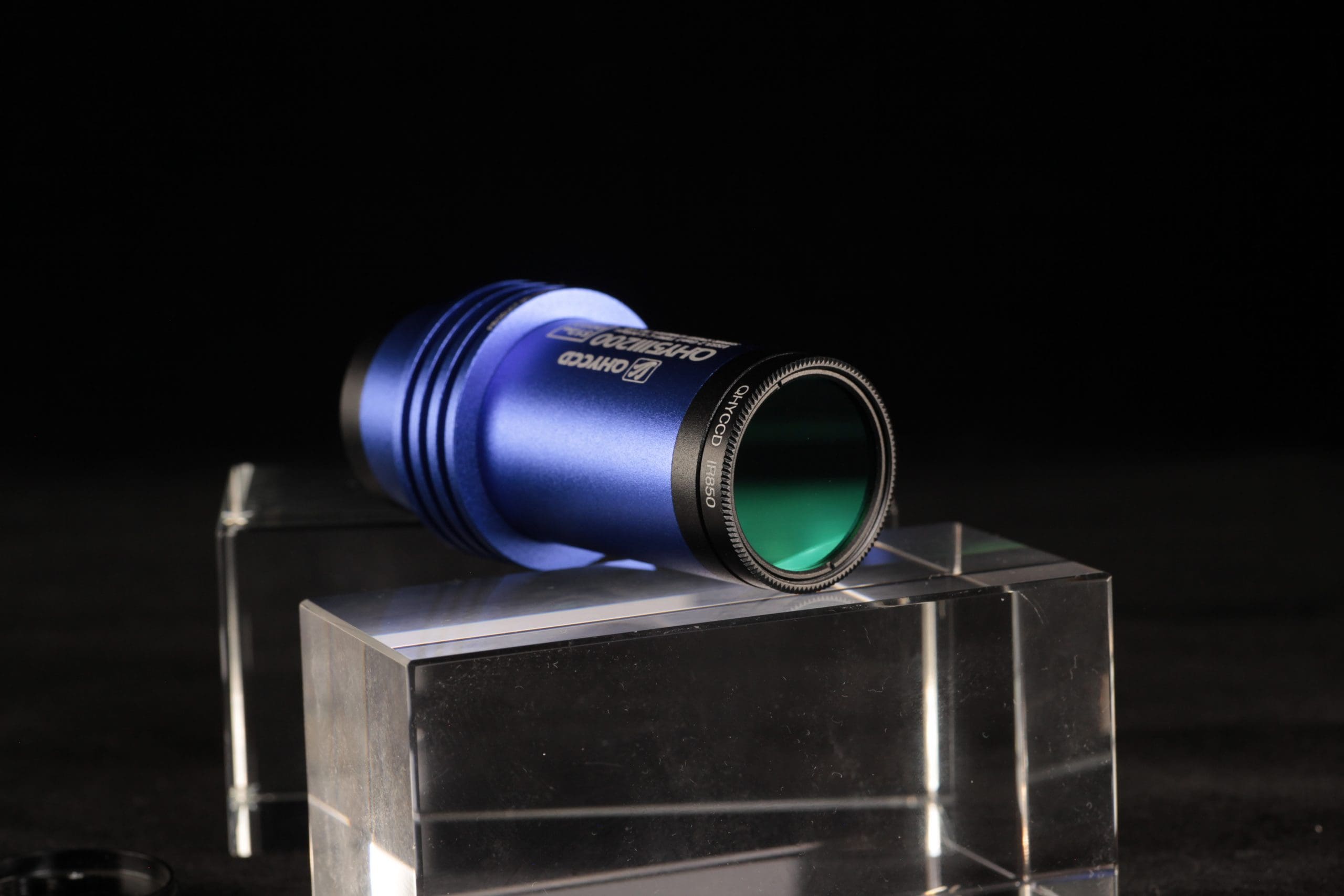


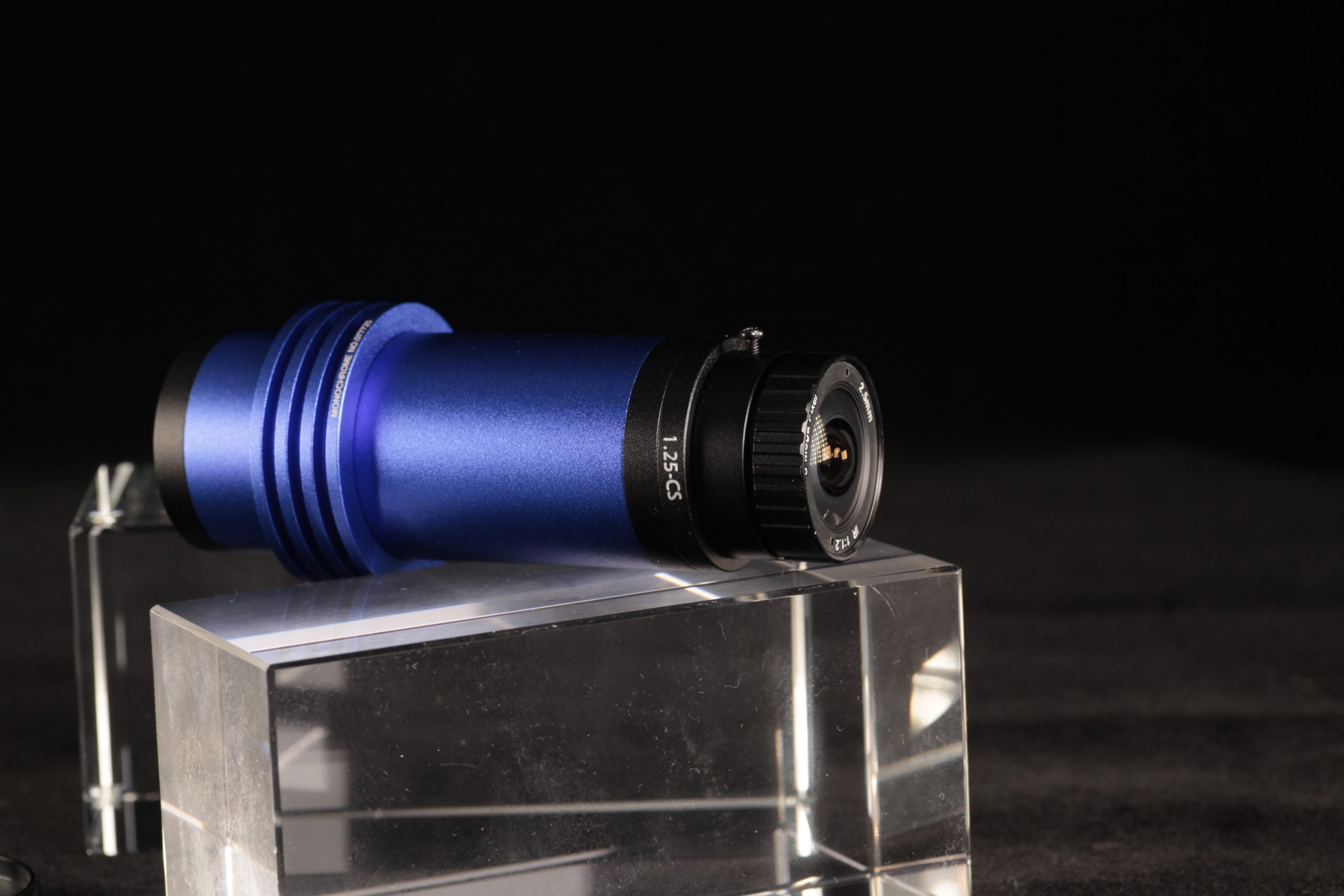
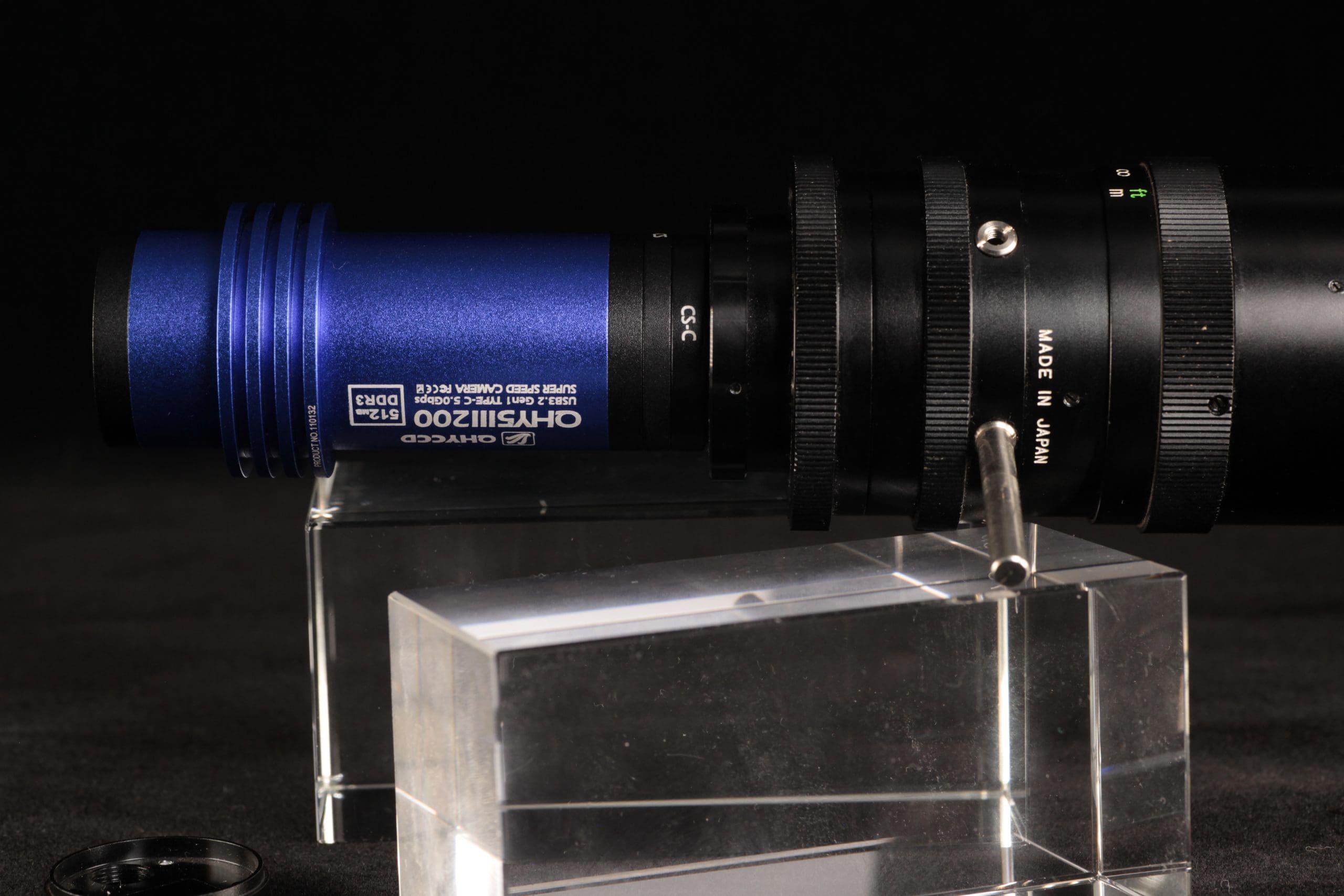
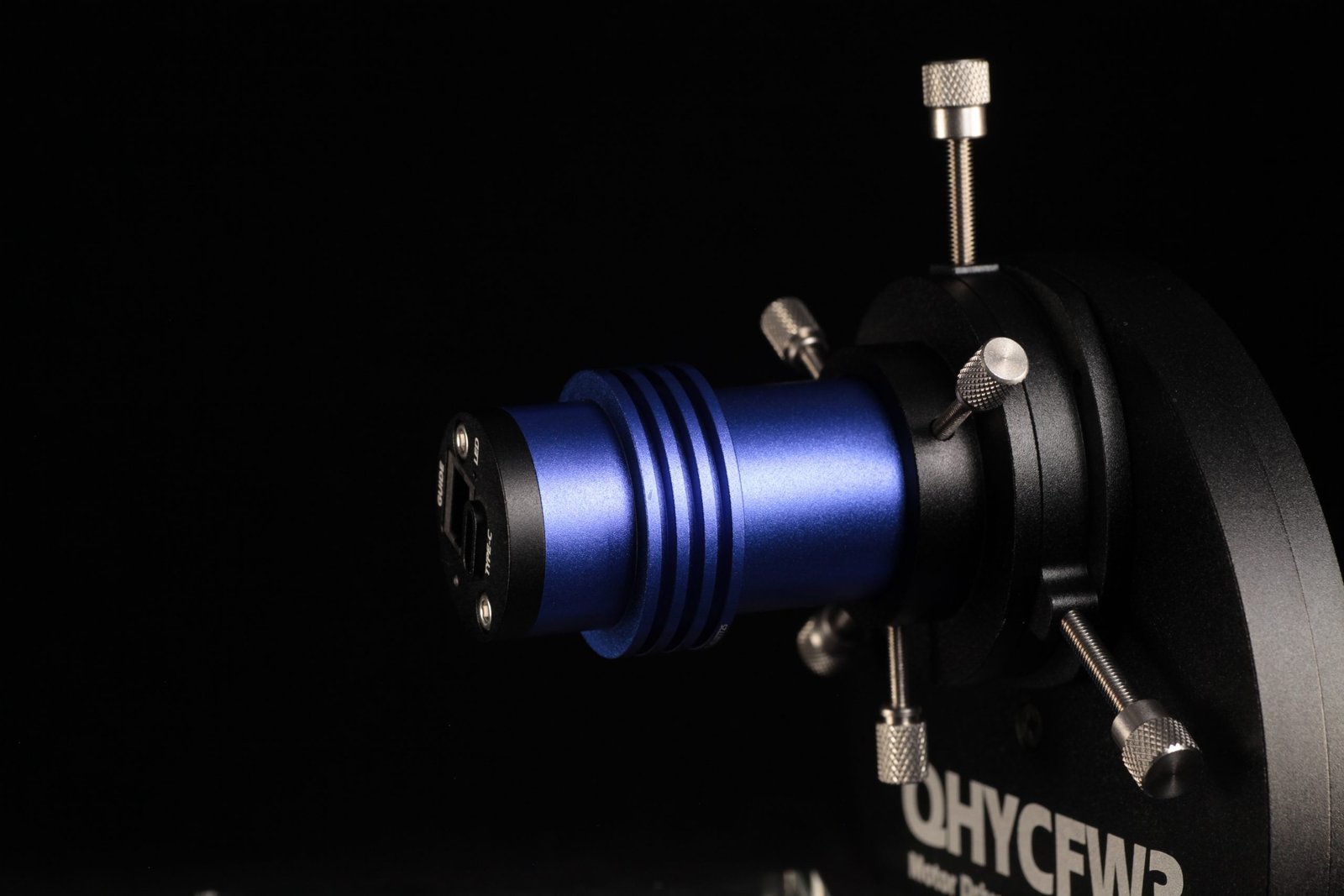 By the way, there’s a 1.25 inch filter wheel adapter to connect your mono planetary cam with
By the way, there’s a 1.25 inch filter wheel adapter to connect your mono planetary cam with  The new QHY5III (Ver.2) series cameras all use the USB3.2 Gen1 Type-C interface. Compared to the USB3.0 Type-B interface used in the previous generation, the Type-C interface has a longer life and is more flexible.
The new QHY5III (Ver.2) series cameras all use the USB3.2 Gen1 Type-C interface. Compared to the USB3.0 Type-B interface used in the previous generation, the Type-C interface has a longer life and is more flexible.
 The new QHY5III (Ver.2) series of cameras is equipped with a status indicator at the back of the camera. If the camera experiences an abnormal status, the multi-colored indicator light will help to determine the situation, with different colors signifying different conditions. During normal operation, this indicator light is off, so there is no worry about light contaminating the image.
The new QHY5III (Ver.2) series of cameras is equipped with a status indicator at the back of the camera. If the camera experiences an abnormal status, the multi-colored indicator light will help to determine the situation, with different colors signifying different conditions. During normal operation, this indicator light is off, so there is no worry about light contaminating the image.
